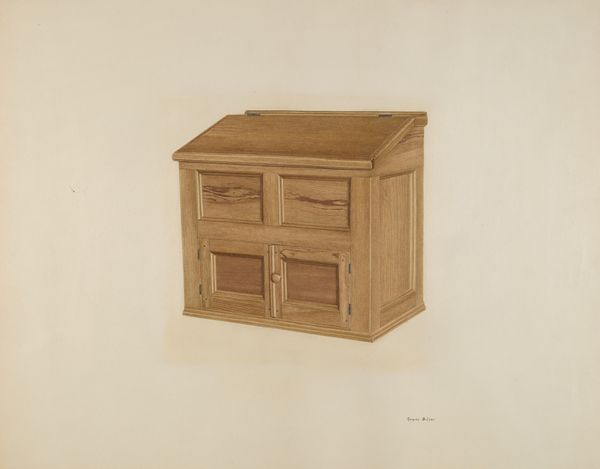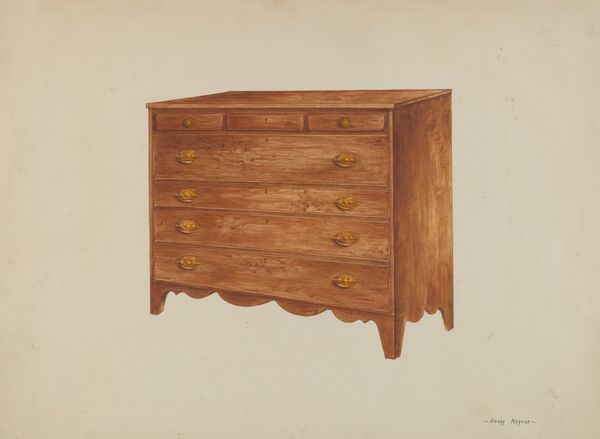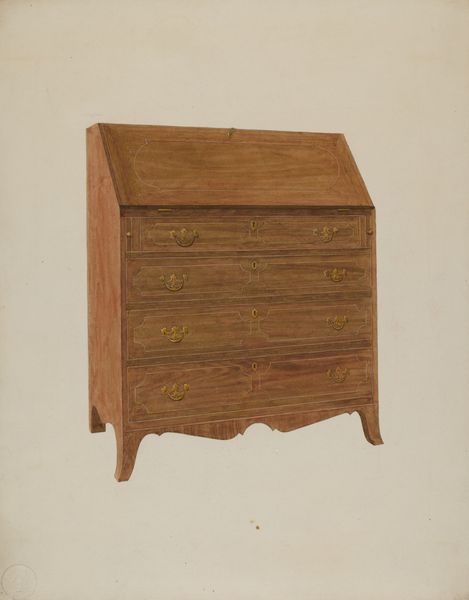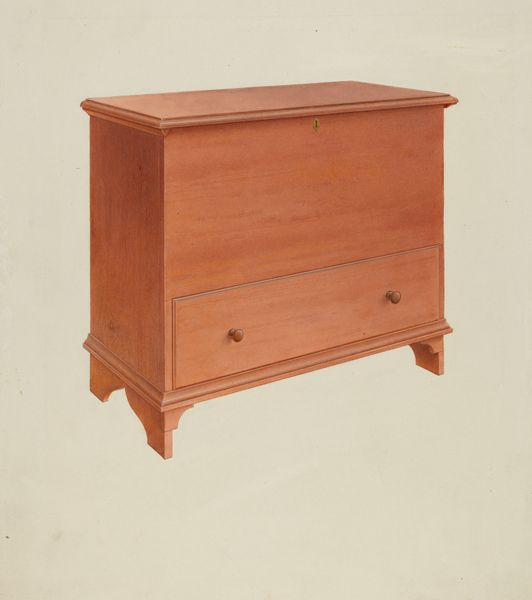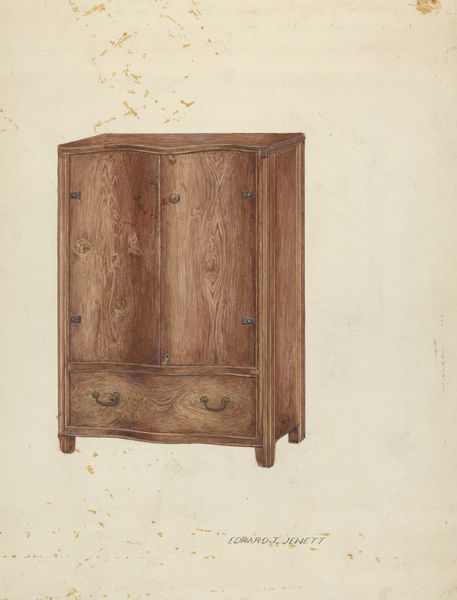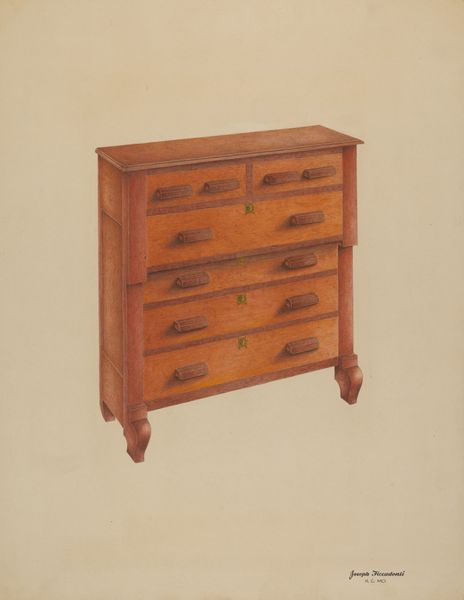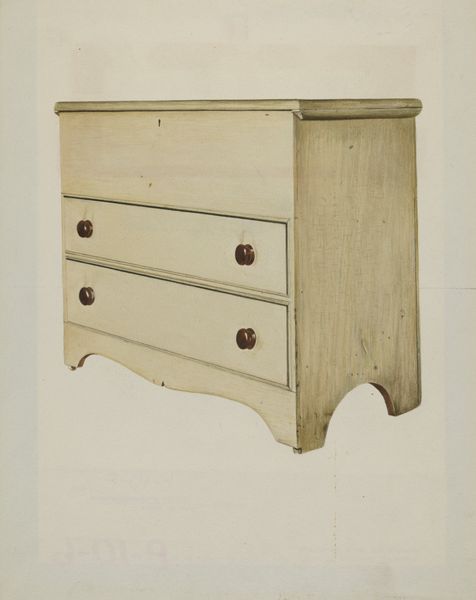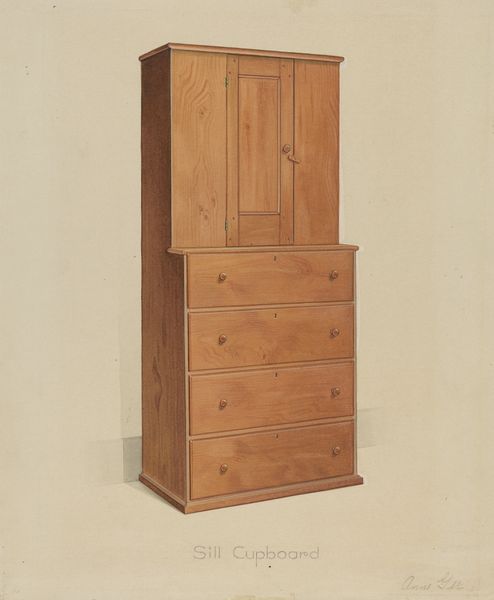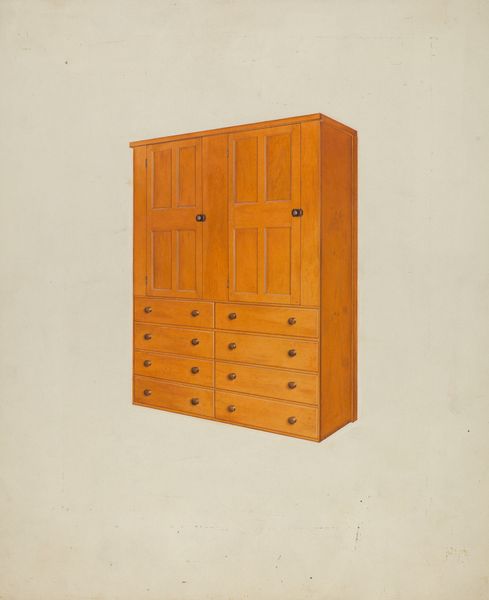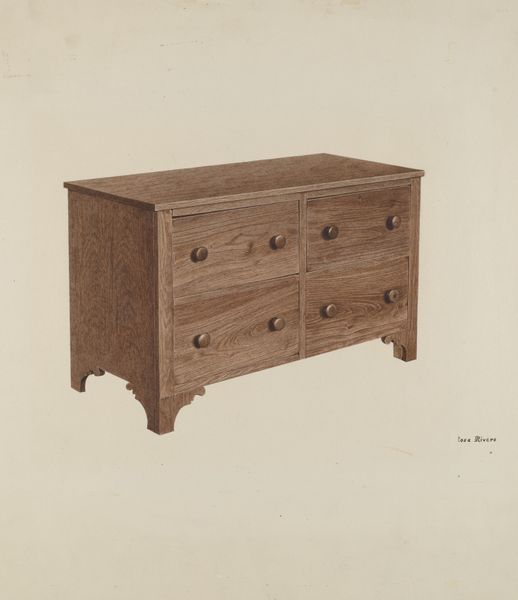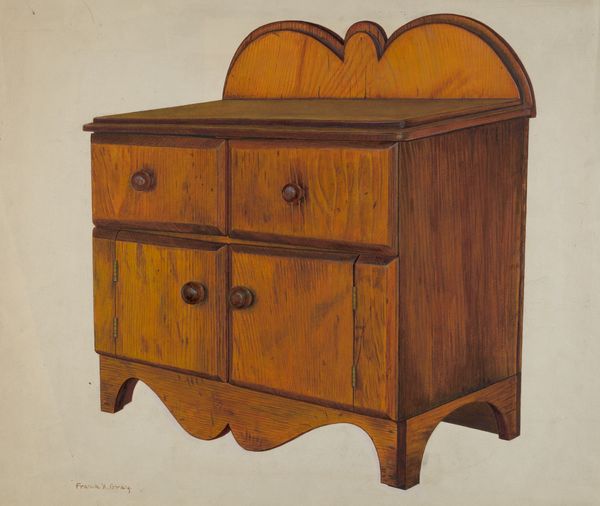
drawing
#
drawing
#
toned paper
#
water colours
#
charcoal drawing
#
possibly oil pastel
#
charcoal art
#
oil painting
#
stoneware
#
underpainting
#
charcoal
#
watercolor
Dimensions: overall: 33.6 x 44.6 cm (13 1/4 x 17 9/16 in.)
Copyright: National Gallery of Art: CC0 1.0
Editor: Here we have "Chest," a drawing from around 1939 by Esther Molina. It’s mainly rendered in what looks like watercolor and charcoal. There's something so familiar about this simple wooden chest of drawers... almost like a memory. What historical context informs our reading of such a utilitarian piece of furniture depicted during this period? Curator: That's a perceptive observation. It's vital to remember that during the late 1930s, in the wake of the Great Depression, representations of everyday objects held particular weight. The simple wooden chest wasn’t just furniture. It signified resourcefulness, self-sufficiency, and a connection to simpler times. Considering this drawing's probable commissioning context, the Works Progress Administration might have been at play here. Does this prompt thoughts regarding art’s social function and relationship to broader political efforts during the New Deal era? Editor: Absolutely. It makes me consider who this art was for. Were pieces like these intended to romanticize the past or provide some sort of visual reassurance during a time of economic instability? Did they reflect a broader political agenda of the WPA? Curator: Precisely. The WPA aimed not just to provide employment, but also to shape cultural narratives. Images of familiar, functional objects such as this chest often celebrated American craftsmanship and the dignity of labor. Moreover, you’ll see here that Molina's rendering, while seemingly straightforward, romanticizes form and material, creating a symbolic anchor during the massive social and economic upheavals. Considering these aspects, what does it tell us about how such “realistic” artworks participated in actively shaping public perception and national identity at the time? Editor: It changes everything! I saw it as a still life but realizing its social and historical roots transforms my understanding. It highlights the complex relationship between art, propaganda, and social stability during turbulent times. Curator: Indeed. It reveals the layered political dimensions even the most humble subjects may hold, demonstrating art's critical public function beyond mere aesthetic appeal.
Comments
No comments
Be the first to comment and join the conversation on the ultimate creative platform.
